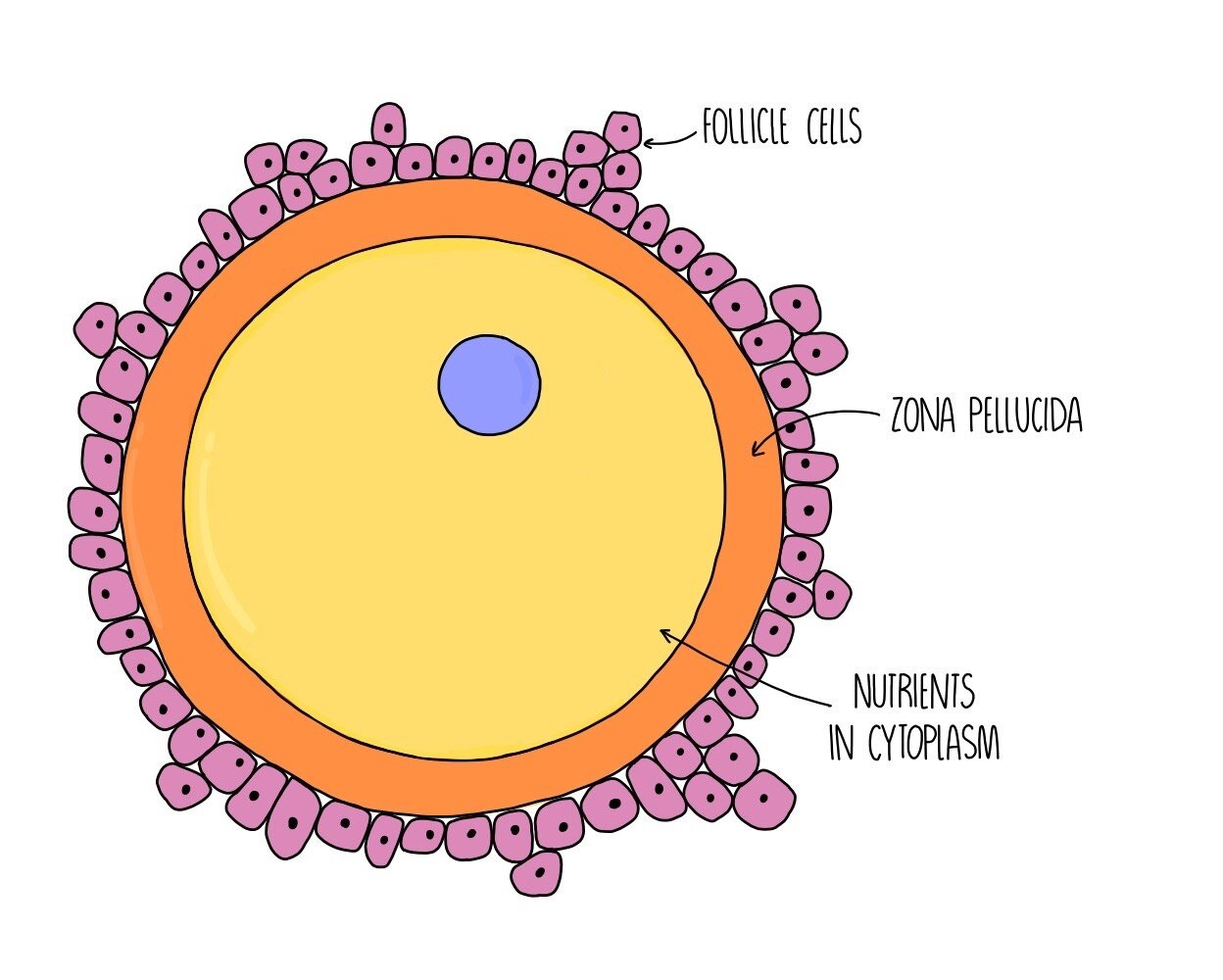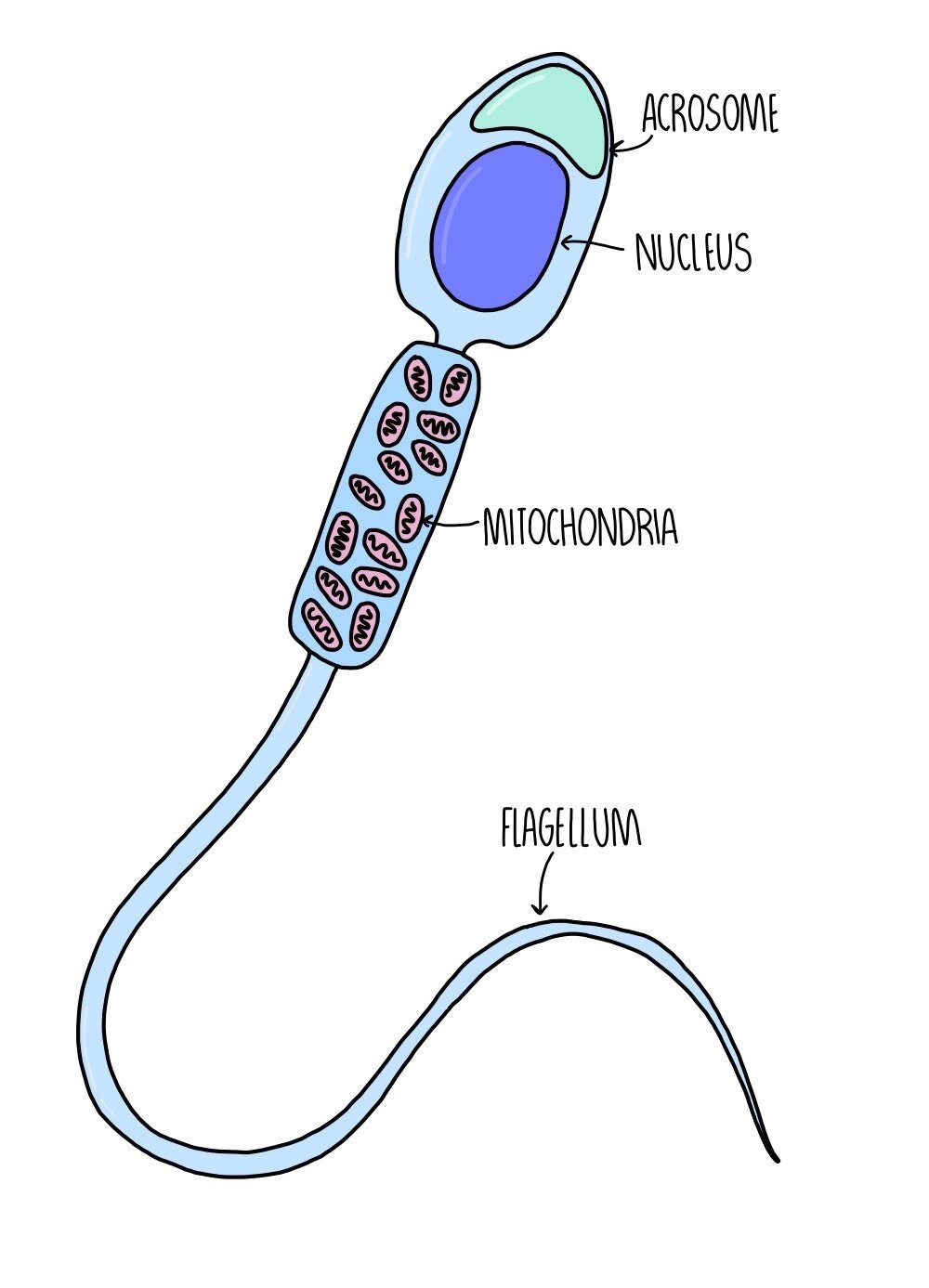Gametes and Fertilisation
Gametes
Gametes are sex cells (the sperm and egg in humans). Gametes are haploid which means they contain half the number of chromosomes as the rest of the cells which make up our body. This means that when two gametes fuse during sexual reproduction, the fertilised egg (called a zygote) contains the full number of chromosomes i.e. it is diploid. In humans, the diploid number of chromosomes is 46 (23 pairs), which means that gametes contain just 23 chromosomes. During sexual reproduction, the nucleus of the sperm cell fuses with the nucleus of the egg cell - this fusion of nuclei is called fertilisation.
Adaptations of gametes
Egg cells are specialised for fertilisation in the following ways:
Cytoplasm contains nutrients for growth of the developing embryo.
There is an outer layer called the zona pellucida - this changes after fertilisation so that no further sperm can penetrate.
Follicle cells outside the zona pellucida form a protective coating around the egg cell.
Sperm cells are also specialised to carry out fertilisation:
Overall streamlined shape for faster swimming.
Tail (flagellum) enables the sperm to swim.
Contain lots of mitochondria to provide ATP for movement.
The head of the sperm contains the acrosome - this is filled with digestive enzymes which break down the egg’s zona pellucida and allow the sperm to reach the egg cell membrane.
The Acrosome Reaction
When a sperm reaches the egg cell, it binds to its outer layer (the zone pellucida) through attachment to sperm-binding proteins. Once bound, it releases the digestive enzymes that are contained in the acrosome. These enzymes digest a tunnel through the zona pellucida so that the sperm can reach the plasma membrane of the egg cell. The plasma membranes of the sperm cell and the egg cell fuse and the sperm releases its nucleus into the egg cell cytoplasm. The nuclei of the sperm and egg fuse - fertilisation has taken place and a zygote is formed.
The Cortical Reaction
The fusion of the sperm cell and egg cell membranes triggers the release of calcium ions which stimulates vesicles containing cortical granules to move and fuse with the egg cell membrane. The cortical granules are released into the zona pellucida, which continue breaking down the zona pellucida, removing the remaining sperm-binding proteins so that no further sperm can bind. Other substances within the cortical granules produce a new outer layer which is thick and impenetrable to sperm cells. This process prevents multiple sperm cells from fertilising the egg, which would result in the zygote having an abnormal number of chromosomes.



